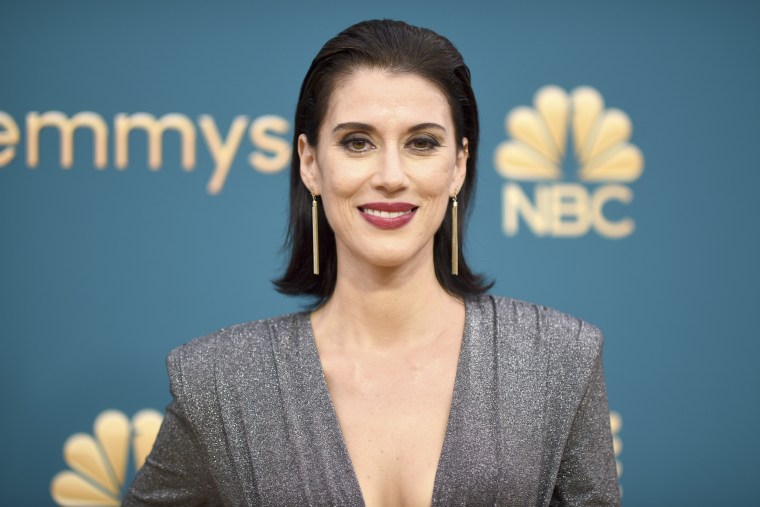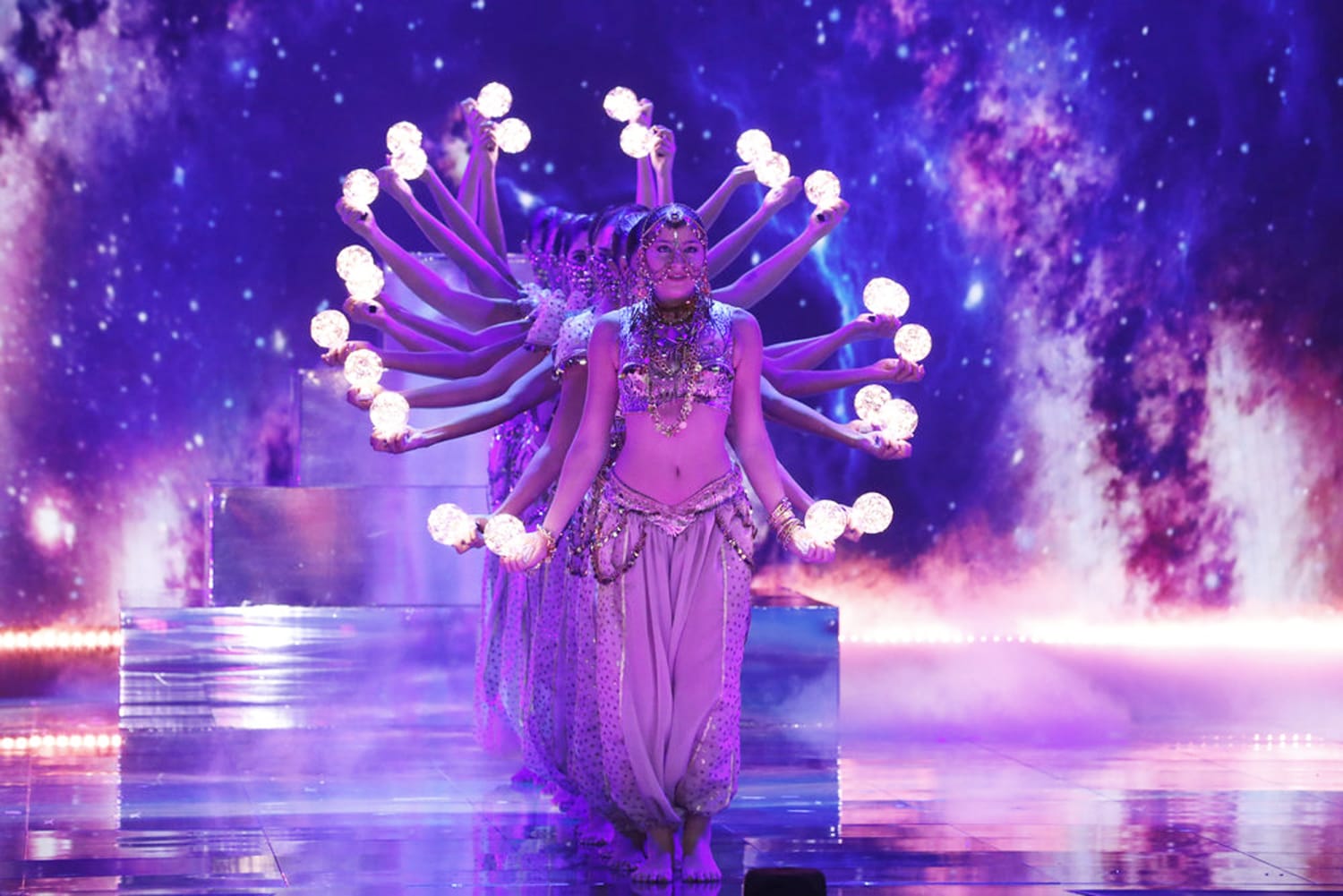On Wednesday night, the all-female Lebanese dance group Mayyas was crowned the winner of NBC’s “America’s Got Talent.” On Monday, Cherien Dabis walked the red carpet in Los Angeles as the first Palestinian woman director to be nominated for an Emmy Award, for Hulu’s “Only Murders in the Building.” On Saturday, Ons Jabbeur became the first Arab woman to reach the U.S. Open final.
Although Arab women are not seeking validation from the West, seeing them finally recognized on a global scale is an inspiring and crucially needed corrective to the stereotypes that have plagued them. For too long, narratives have fixated either on their appearance and body shape or their purported role as submissive women to overbearing husbands (unless they’re portrayed as terrorists).

The judges on “America’s Got Talent” celebrated the beauty of the Mayyas’ standout routine with all the words appropriate to a seamlessly choreographed dance routine using feathered props, handheld lights and complicated synchronization to wow the audience.
“Astonishing” declared Simon Cowell. Sofia Vergara was even more effusive: “There is nothing that I can say because you guys are the best thing that has ever come across this stage on ‘AGT.’”
But it was judge Howie Mandel’s comment that captured the group’s triumph best: “It’s great for women, female empowerment, your culture.” He’s right. Witnessing Arab women flourish on the small screen, showcasing their talents and breaking through the presumption that they are oppressed is widely significant.
For too long, narratives have fixated either on their appearance and body shape or their purported role as submissive women to overbearing husbands (unless they’re portrayed as terrorists).
At the same time, it’s a shame that it’s taken so much time for the Western world to wake up to this reality. From Fatima al-Fihri founding the world’s first university in 859 to Zekra Alwach becoming the first female mayor of Iraq in 2015, Arab women have long proved they deserve more than objectification.
That is not to say Arab women live in a utopia in the Middle East. Last month, for example, a Saudi woman was sentenced to 34 years in prison for using Twitter. Nadim Cherfan, the Mayyas choreographer, opted to have an all-female crew because he “wanted to deliver a message about female empowerment … as Arab women are still called names for being dancers.” With that ethos, the Mayyas have shown that Arab women can take control of their fate — but such accomplishments are often overlooked in the West.
The author of “Reel Bad Arabs,” Jack Shaheen, highlights how Hollywood sidelines Arab women. Shaheen refers to them as “bundles in black” because their roles are usually “in the background, in the shadows — submissive.” Although no statistical data on Arab women in Hollywood seems to exist, data on Muslim women can be an indicator of their representation, as the media often (incorrectly) conflates being Arab with being Muslim.
One study assessing Muslim representation by the University of Southern California Annenberg found that only 23.6% percent of all Muslim characters in film and television between 2017 and 2019 were women. The roles they did receive, according to the Geena Davis Institute, were those of wives or mothers who were often overpowered.
Such narratives have reinforced the notion that Arab women are in need of being saved, with interventions ranging from the military to the sartorial. Productions like Netflix’s “Elite” and Apple TV’s “Hala” showcase this “saving” by presenting oppressed Arab women as having identity crises culminating in a battle with their headscarves. The shows climax in dramatic hijab-removing scenes presented as momentous acts of liberation. The implication is that these Arab women have no depth to their character other than their attire.
Although some women do struggle with wearing headscarves, for others it is a choice. Not only is it inaccurate to reflexively use Arab women’s dress as a sign that they lack agency, such sweeping depiction has had real-life consequences as countries like France try to control how women dress.
At the other extreme, Western filmmakers have cast scantily clad Arab women as controlled by men, too. In James Bond’s “The Spy Who Loved Me,” the objectification of the characters was so extreme that they were namelessly credited as Arab beauty 1, 2, 3 and so on. Disney’s “Aladdin,” meanwhile, has Princess Jasmine using her physical beauty to seduce the villain as a distraction. Such portrayals of Arab women have led to their hypersexualization, with many reporting how they are often fetishized as part of some exotic Jasmine-esque fantasy.
Not only is it inaccurate to reflexively use Arab women’s dress as a sign that they lack agency, such sweeping depiction has had real-life consequences.
Just as common are images of Arab women living as concubines in harems waiting to please men. Elvis’ “Harum Scarum” famously portrayed this misogynistic stereotype. The reality, as Moroccan author Fatima Mernissi writes in “Scheherazade Goes West,” is that the harems were a show of power for women. Mernissi clarifies that a harem in Arab culture is a “private space” but has been misconstrued as a place of sexual fantasy by Western men. The way that Scheherazade, the most famous harem dweller in literature, disarms her husband is by entrancing him with her magical use of language — not her body.
A gradual shift in how the West portrays Arab women has begun, with nuanced Arab female characters battling the complexities of life through career choices, health issues, relationships and more. What’s important is they are not merely responding to the beckoning of their husbands. This year saw May Calamawy become the first Arab superhero in a Marvel series, while the release of the Hulu dramedy “Ramy” respectfully navigates the complexity of living as an Arab American.
It goes without saying that there is still a lot of progress to be made for Arab women in the Middle East and in their representation in Western media. But the achievements of the past week should help to break down the stereotypes surrounding Arab women and inspire them to dream big.
Source: | This article originally belongs to Nbcnews.com










